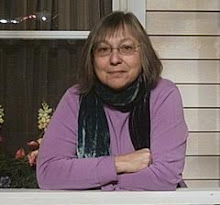 Red Hook is a scruffy waterfront district, with the new sprouting among the old landmarks. In an area where cargo ships once loaded grain, cruise ships now transport tourists. Landmarks are largely in disrepair, but artists have found the old warehouses hospitable and mega-stores have found the space they crave for expansion. It is a work in progress, an unfinished picture.
Red Hook is a scruffy waterfront district, with the new sprouting among the old landmarks. In an area where cargo ships once loaded grain, cruise ships now transport tourists. Landmarks are largely in disrepair, but artists have found the old warehouses hospitable and mega-stores have found the space they crave for expansion. It is a work in progress, an unfinished picture.Tobacco The Cash Crop

Roode Hoek, Red Hook or the red corner as it was called by the Dutch settlers when they arrived in 1636, became a profitable center for tobacco farming, an enterprise that was begun by the Lenape Indians.
Pre Civil War Period: The Boom Years
The construction of the Erie Canal allowed grain grown in the Midwest to be shipped to New York via the Hudson river and loaded onto
 ships in Red Hook. The Beard Warehouse is typical of the warehouses that lined the shore here during that time. The Beard Street Warehouse, built in 1860's, is actually many smaller warehouses linked together. There were so many warehouses built on the shores that, when viewed from Manhattan, Red Hook looked like a walled city.
ships in Red Hook. The Beard Warehouse is typical of the warehouses that lined the shore here during that time. The Beard Street Warehouse, built in 1860's, is actually many smaller warehouses linked together. There were so many warehouses built on the shores that, when viewed from Manhattan, Red Hook looked like a walled city.Bust Years
Housing projects were built for the dock workers in the 1930's and amenities included parks and a wonderful pool often used by an after-hours crowd adept at climbing the fence. But the construction of the Expressway cu
 t the area off from the rest of Brooklyn. This, combined with a lack of train service to the area and the shipping industry's migration to New Jersey, dealt Red Hook a fierce blow. Unemployment in the 1950's was running at 30 percent.
t the area off from the rest of Brooklyn. This, combined with a lack of train service to the area and the shipping industry's migration to New Jersey, dealt Red Hook a fierce blow. Unemployment in the 1950's was running at 30 percent.The area had acquired a reputation not only as a waterfront but as a mecca for tough, blue collar workers, and the neighborhood was the setting for several blockbuster books, movies and plays. Think of Marlon Brando in On the Waterfront, the family in Arthur Miller's A View From the Bridge and the world of Al Capone. This was Red Hook in its heyday.

Back Up Again
It is hard to pinpoint what brought about the changes occurring in the neighborhood, but they have been gaining momentum. The artists, the food vendors at the soccer fields, Fairway Food Market and Ikea are all part of the new equation. There is still much of the past to savor and enjoy. You can walk along the waterfront and see splendid views of the Statue Of Liberty, ponder the boats moving about the harbor, pop into small artisan shops, drop into a pub or, on a weekend, walk over to the soccer fields and enjoy a carnival of food treats from Central America.





